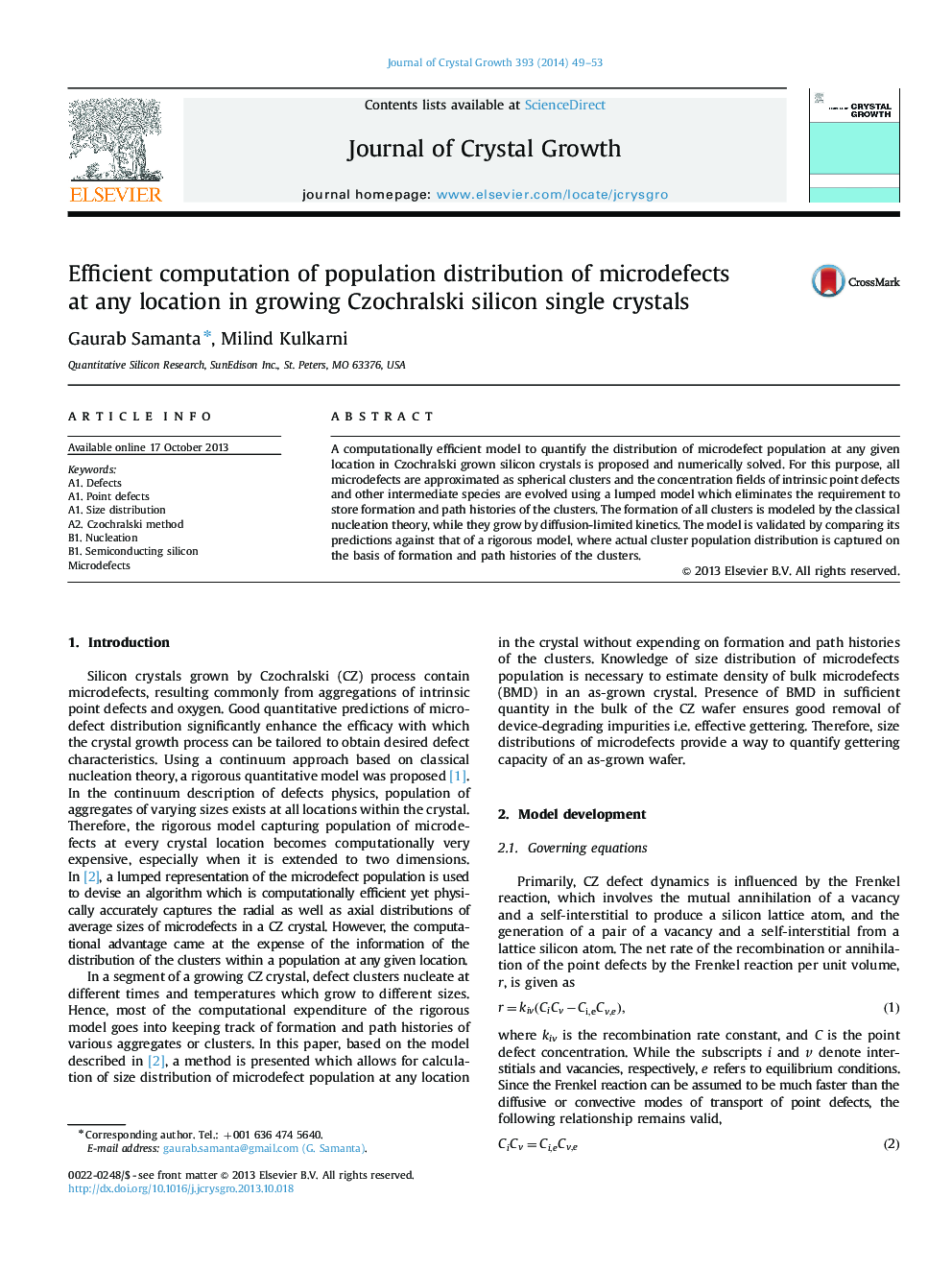| Article ID | Journal | Published Year | Pages | File Type |
|---|---|---|---|---|
| 8151136 | Journal of Crystal Growth | 2014 | 5 Pages |
Abstract
A computationally efficient model to quantify the distribution of microdefect population at any given location in Czochralski grown silicon crystals is proposed and numerically solved. For this purpose, all microdefects are approximated as spherical clusters and the concentration fields of intrinsic point defects and other intermediate species are evolved using a lumped model which eliminates the requirement to store formation and path histories of the clusters. The formation of all clusters is modeled by the classical nucleation theory, while they grow by diffusion-limited kinetics. The model is validated by comparing its predictions against that of a rigorous model, where actual cluster population distribution is captured on the basis of formation and path histories of the clusters.
Related Topics
Physical Sciences and Engineering
Physics and Astronomy
Condensed Matter Physics
Authors
Gaurab Samanta, Milind Kulkarni,
